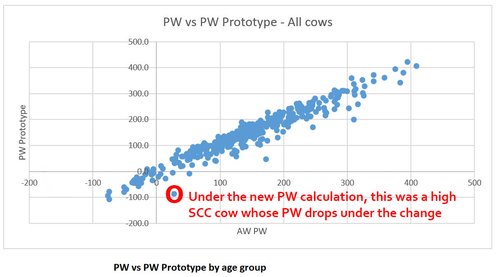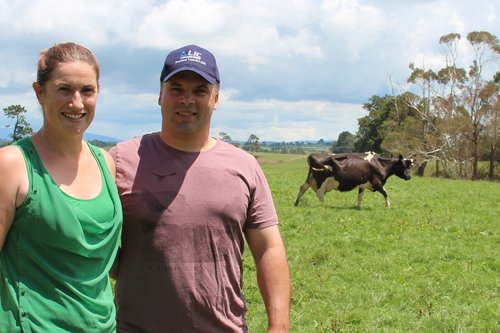With PW ‘in for a shake-up’, individual cow rankings are set to become more meaningful and will streamline key decision-making processes for most dairy farmers.
That’s according to Matamata-Piako dairy farming couple Michelle and Bill Burgess, who say the inclusion of Somatic Cell Count (SCC) to the PW mix will make within-herd cow rankings more of “one-stop, go-to tool.”
PW reflects a cow’s (or a herd’s) lifetime production ability, essentially providing the animal(s) with an economic value: Top profit-making cows can therefore be distinguished from the mid-range and poor performing contemporaries.
Until now, PW has been the sum of four production values, mainly sourced from herd test information: milk fat; milk protein; milk volume, and; cow liveweight.
Despite SCC being a key influence in culling, selling, and buying decisions, it has traditionally been a stand-alone value.
From February 17, however, SCC will feature as the fifth factor of PW.
Testing the waters
Michelle and Bill Burgess received early access to the new PW calculation across their herd.
While they acknowledged the new data would provide a more robust result, the actual impact on their overall herd PW had been almost negligible.
“We’ve had a quick look at the PW report that displays our cows, and on the whole the effect of the new calculation wasn’t that significant,” Michelle said
“There’s nothing drastic in there," Michelle said. For us the biggest changes are to the cows that are at the extremes – they’re either extremely good with cell count which is a positive influence, or they’re extremely bad with cell count, and obviously their PW was pulled down a bit.”
 See the adjacent graph, which shows the deviation of individual cows from the old PW calculation to the new calculation. The highlighted dot, in red, shows that particular cow's PW dropped from 27 points under the former calculation to -87 points under the new calculation. This makes sense, the cow was a 2-year-old which had three valid Herd Test results; in two of those herd tests, the cow exceeded 1 million somatic cell counts.
See the adjacent graph, which shows the deviation of individual cows from the old PW calculation to the new calculation. The highlighted dot, in red, shows that particular cow's PW dropped from 27 points under the former calculation to -87 points under the new calculation. This makes sense, the cow was a 2-year-old which had three valid Herd Test results; in two of those herd tests, the cow exceeded 1 million somatic cell counts.
Michelle said traditional PW rankings merely confirmed what a series of herd test reports could show, so while useful, the PW report had its limits because SCC hadn’t been part of the equation.
Way forward

More could be done, however.
“Beside PW and SCC, there are other factors that come in to play when you’re making decisions on which cows to buy, sell, or cull – like her fertility, her condition score, and so on,” Michelle said.
“You can’t mentally handle that much information from various sources, and compare cows. It’s nice to see PW heading in a direction which gives a picture of the cow’s profitability as a whole – the big picture, including her health and her fertility. The PW calculation seems set to become a lot more comprehensive.”
A review of the PW index by LIC, which included farm trials and consultation with NZAEL and breed societies, has resulted in next month’s change.
Further work on PW will continue through 2018, to research how fertility and Body Condition Score (BCS) traits can be added to the PW calculation as they too can significantly impact the performance of a dairy cow.
“It’s good to see PW becoming a stronger indicator of whole-farm profitability for a given cow over her lifetime, because healthy, fertile, producers certainly cost farmers a lot less and give us better profit margins,” Michelle said.
About Bill, Michelle, & their farm
- Michelle & Bill Burgess winter-milk 350 cows on a 100ha property at Te Poi, near Matamata. The farm is high-input, with their entirely New Zealand-bred cows averaging 620kg milksolids a season (the top cow does in excess of 900kg).
- Michelle is a leading advocate for better dairy genetics to improve New Zealand dairy farming practices. She is a member of the Farmer Advisory Panel that is consulted by New Zealand Animal Evaluation Ltd, a subsidiary of DairyNZ. Michelle also initiated the now 1200-member strong NZ Dairy Genetics Network (a growing Facebook group).





